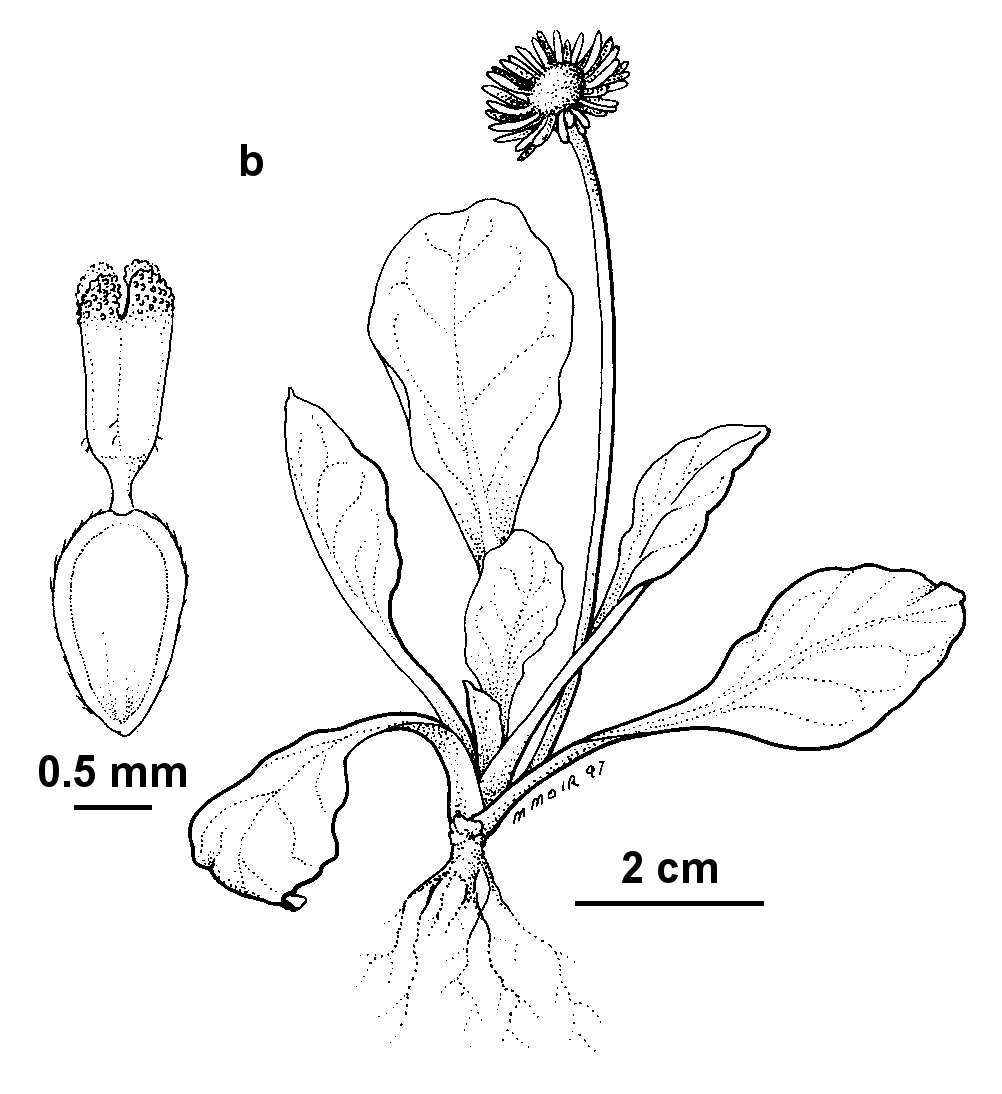Bellis perennis
L. English DaisyPerennial, stoloniferous herb. Leaves rosetted or densely clustered at base; lamina obovate, 10–35 mm long, 5–25 mm long, tapered to (often purplish) petiole-like base about as long as lamina, pilose to glabrescent; margins shallowly crenate or serrate. Peduncle erect, ebracteate, c. 3–20 cm long, variably pilose; involucral bracts ovate, 3–6 mm long; receptacle convex (hollow and conical in fruit); ligules spreading, white, often reddish-tipped, 4–10 mm long; tubular florets yellow. Cypselas obovate, 1–1.6 mm long, shortly appressed-hairy; pappus absent. Flowers most of year (rarely in winter).
GleP, VVP, GipP, OtP, WaP, Gold, CVU, DunT, WPro, HSF, HNF, OtR, Strz, VAlp. Also naturalised SA, NSW, Tas. Native to southern, western and central Europe. Occasional in cooler districts of the State, usually as a roadside or pasture weed, or a common component of well-watered lawns.
Walsh, N.G. (1999). Bellis. In: Walsh, N.G.; Entwisle, T.J., Flora of Victoria Vol. 4, Cornaceae to Asteraceae, pp. 835–835. Inkata Press, Melbourne.
 Spinning
Spinning


